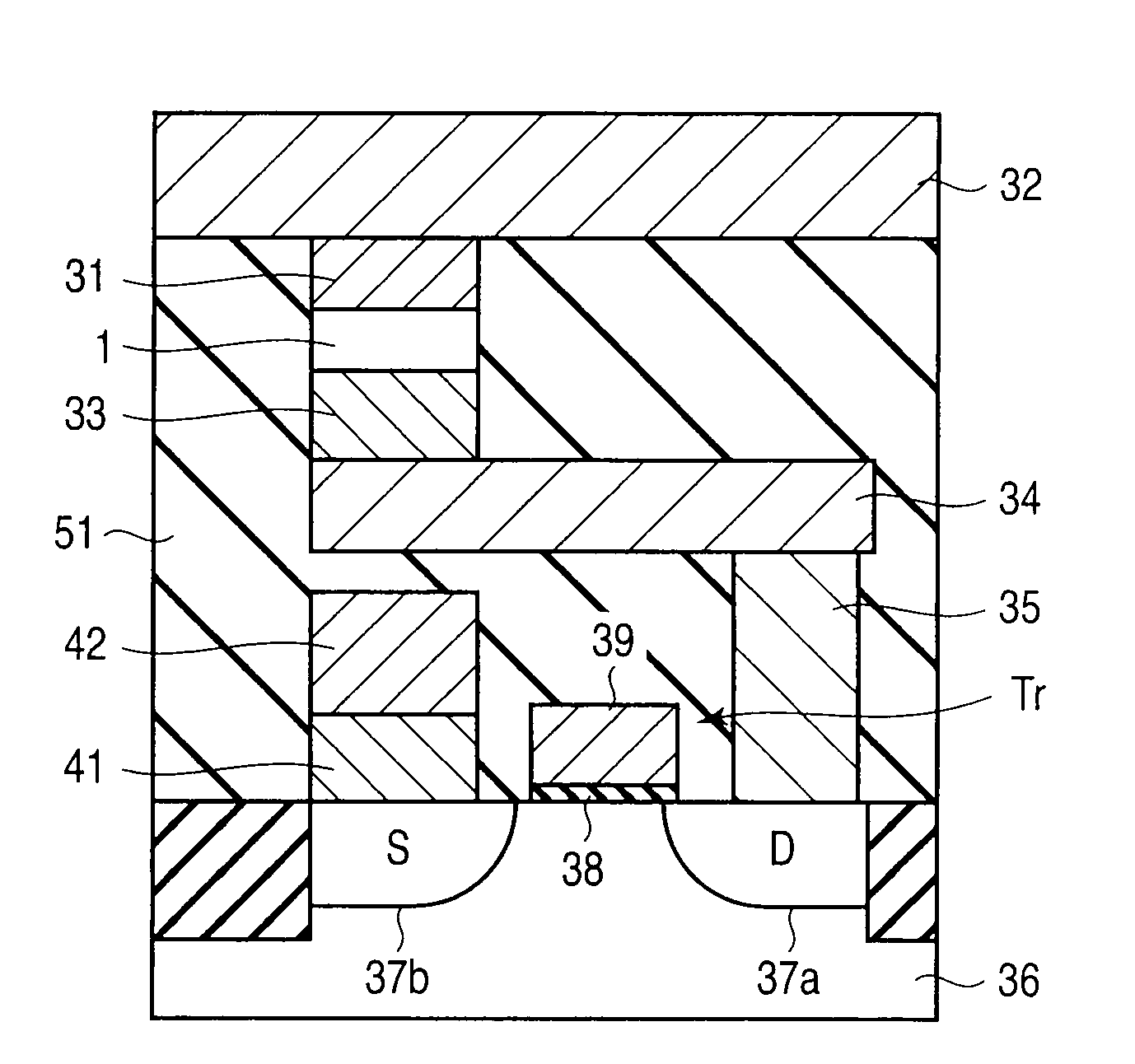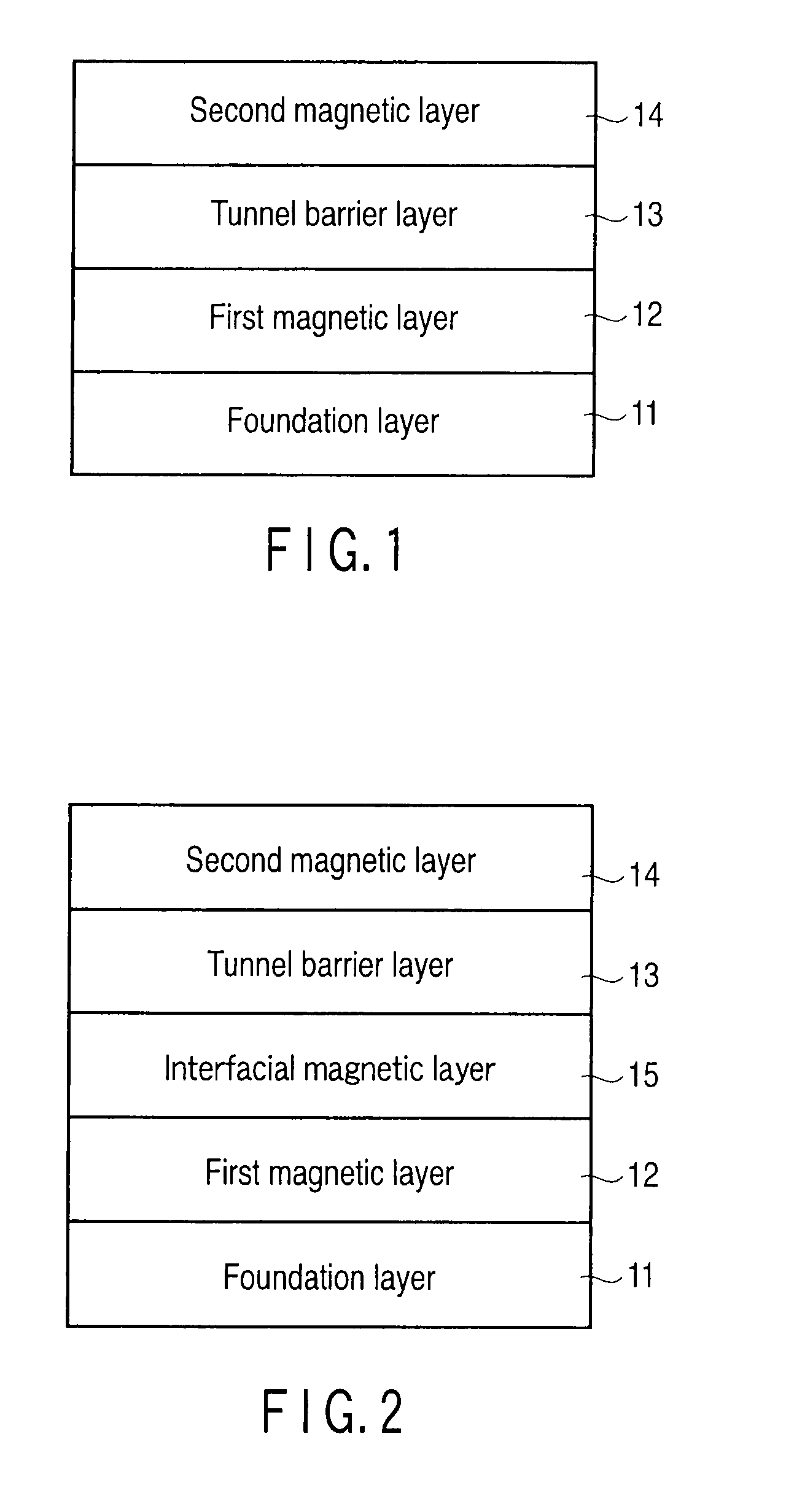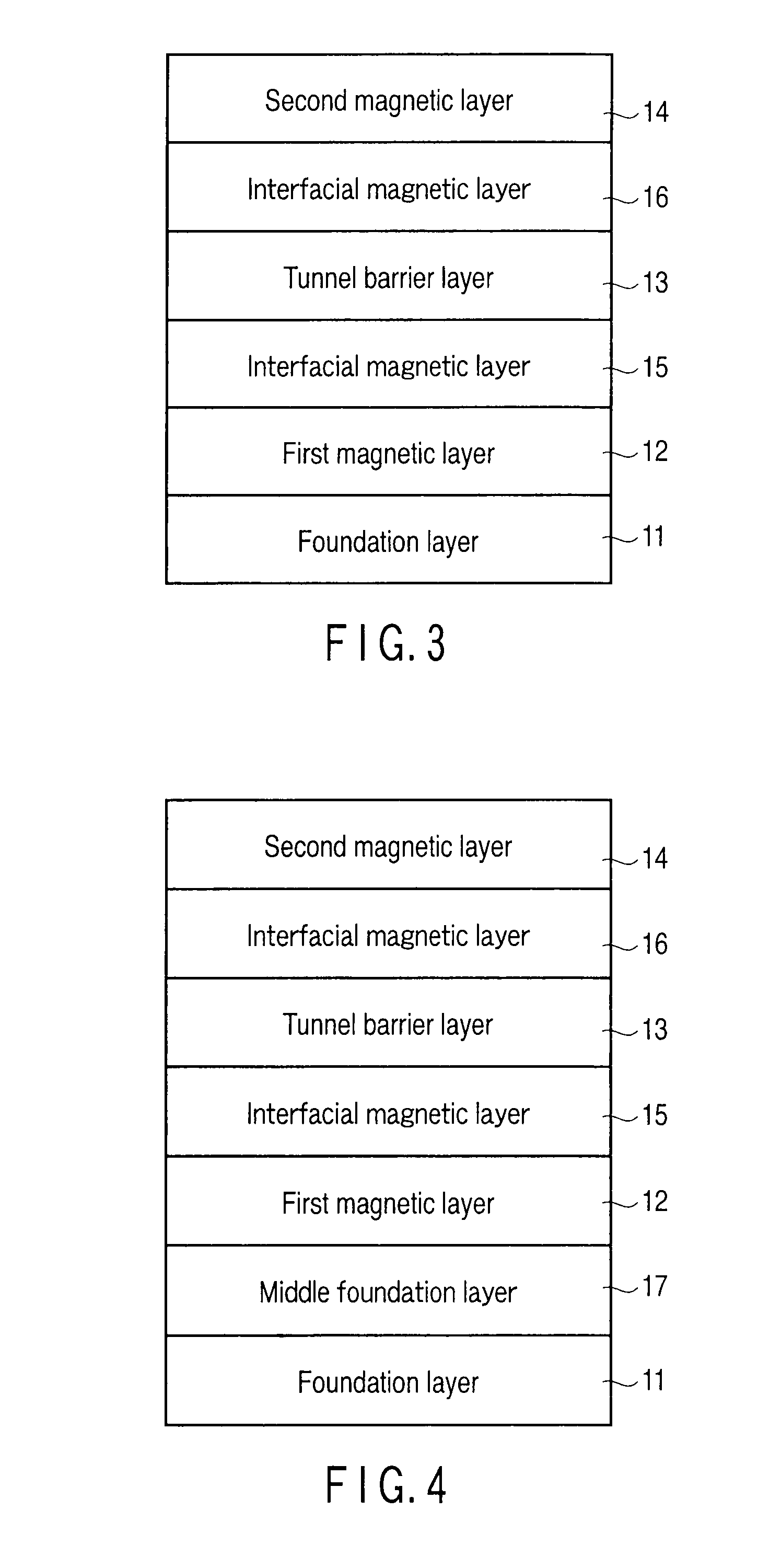Magnetoresistive element and magnetic random access memory
a magnetic random access and magnetic element technology, applied in the field of magnetoresistive elements and magnetic random access memory, can solve the problems of difficult to achieve both a low electric current and memory cell micropatterning
- Summary
- Abstract
- Description
- Claims
- Application Information
AI Technical Summary
Benefits of technology
Problems solved by technology
Method used
Image
Examples
experimental example 1
[0222]The magnetoresistive element had a cap layer / TbCoFe ferromagnetic layer (30 nm) / MgO tunnel barrier layer (1.5 nm) / CoFeB interfacial magnetic layer (1 nm) / L10-FePt ferromagnetic layer (5 nm) / Pt middle foundation layer (3 nm) / Fe foundation layer (10 nm) / Cr foundation layer (10 nm) / NiTa foundation layer (20 nm) / Ta foundation layer (5 nm) / thermal oxide Si layer (potential resetting layer) in this order from the upper layer side.
experimental example 2
[0223]The magnetoresistive element had a cap layer / L10-FePt ferromagnetic layer (3 nm) / MgO tunnel barrier layer (1.5 nm) / CoFeB interfacial magnetic layer (2 nm) / L10-FePt ferromagnetic layer (10 nm) / Pt middle foundation layer (3 nm) / Cr foundation layer (20 nm) / NiTa foundation layer (20 nm) / Ta foundation layer (5 nm) / thermal oxide Si layer (potential resetting layer) in this order from the upper layer side.
[0224]In each sample, the nitride resetting layer and thermal oxide Si layer functioned as potential resetting layers for preventing generation of the surface electric charge. Also, after each layer was formed, vacuum annealing was performed to optimize the TMR characteristics and magnetic characteristics.
[0225]Sectional TEM observation was performed on the three samples described above, thereby evaluating and examining the crystallinity of each MgO tunnel barrier layer.
[0226]In Comparative Example 1, the MgO tunnel barrier layer was found to be amorphous by X-ray diffraction becaus...
application examples
4. APPLICATION EXAMPLES
[0229]Application examples of the present invention will be explained below.
(1) Spin Injection Magnetic Random Access Memory
[0230]The magnetoresistive element according to the example of the present invention is particularly effective in a spin injection magnetic random access memory which has a write circuit for supplying a write current from one terminal to the other of the magnetoresistive element or vice versa, and in which the write current changes the relationship between the magnetization directions in first and second magnetic layers.
[0231]FIG. 9 shows a memory cell of the spin injection magnetic random access memory.
[0232]The upper end of a magnetoresistive element 1 is connected to an upper bit line 32 via an upper electrode 31. The lower end of the magnetoresistive element 1 is connected to a drain diffusion layer 37a of a select transistor Tr via a lower electrode 33, extraction electrode 34, and plug 35.
[0233]A source diffusion layer 37b of the se...
PUM
 Login to View More
Login to View More Abstract
Description
Claims
Application Information
 Login to View More
Login to View More - R&D
- Intellectual Property
- Life Sciences
- Materials
- Tech Scout
- Unparalleled Data Quality
- Higher Quality Content
- 60% Fewer Hallucinations
Browse by: Latest US Patents, China's latest patents, Technical Efficacy Thesaurus, Application Domain, Technology Topic, Popular Technical Reports.
© 2025 PatSnap. All rights reserved.Legal|Privacy policy|Modern Slavery Act Transparency Statement|Sitemap|About US| Contact US: help@patsnap.com



